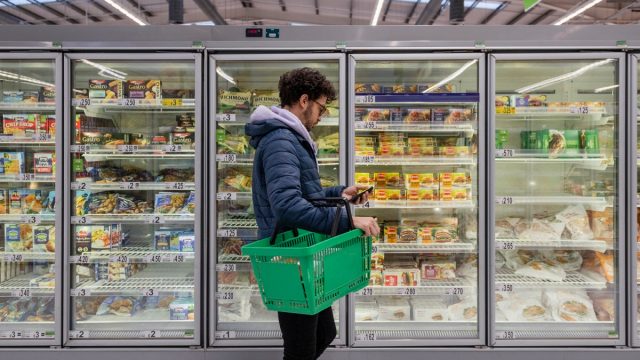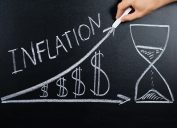Deflation Is Here, and These Items Are Getting Cheaper
You may notice prices finally doing down in certain areas.

Inflation has been hitting us hard in the past couple years. In June 2022, the consumer price index in the U.S. reached 9.1 percent—which is the highest it's been in 40 years. And even as it's fallen over the last 18 months, it often feels like we're still paying way more for things than ever before. But now, relief is on the horizon, as economic experts say we're beginning to experience deflation.
RELATED: Kroger Exec Says Grocery Prices Are Finally Going Down—Here's When.
As Forbes notes, deflation is the "mirror image of inflation." Currently, deflation is just impacting durable goods, Wall Street Journal reporter David Harrison told CBS News. The price for these products has decreased on a year-over-year basis for five consecutive months, dropping down to a low of 2.6 percent in October from their peak in Sept. 2022, according to Harrison's reporting.
But what exactly are durable goods? Harrison explains that these are products that are meant to last more than three years. More specifically, we're seeing price drops for used cars, furniture, and appliances—all of which increased significantly in cost during the pandemic.
On Nov. 30, the U.S. Department of Commerce released new data for the Personal Consumption Expenditures (PCE) price index. According to the data, prices for motor vehicles and parts fell by 1.5 percent year-over-year in October, while used cars had a 7.1 price decrease during that same time.
Meanwhile, the total PCE for furnishings and durable household equipment dropped 2.2 percent year-over-year in October. This was driven mainly by a nearly 8.1 percent decline in household appliance prices, and a 1.2 percent decrease in the price of furniture and furnishings.
RELATED: 4 Dollar Store Items That Are Better Than the Name-Brand, Retail Experts Say.
"What does [durable goods deflation] mean for the economy? Well, it's a good sign," Harrison told CBS News. "The fact that we have these prices falling will offset the ongoing increases in services, and the idea is that will get us back to the 2 percent sweet spot."
That "2 percent sweet spot" is the inflation rate level the Federal Reserve is targeting, and these recent areas of deflation could help push the U.S. closer to this level. That would mean inflation is easing and the Federal Reserve could hold off on additional rate hikes.
Deflation is unlikely to become widespread—but that's best for the economy, according to Harrison. "[Widespread deflation] means there's little demand for goods and services, and that usually happens in a time of recession," he warned.
For more retail news delivered straight to your inbox, sign up for our daily newsletter.
- Source: Bureau of Economic Anaylsis





















